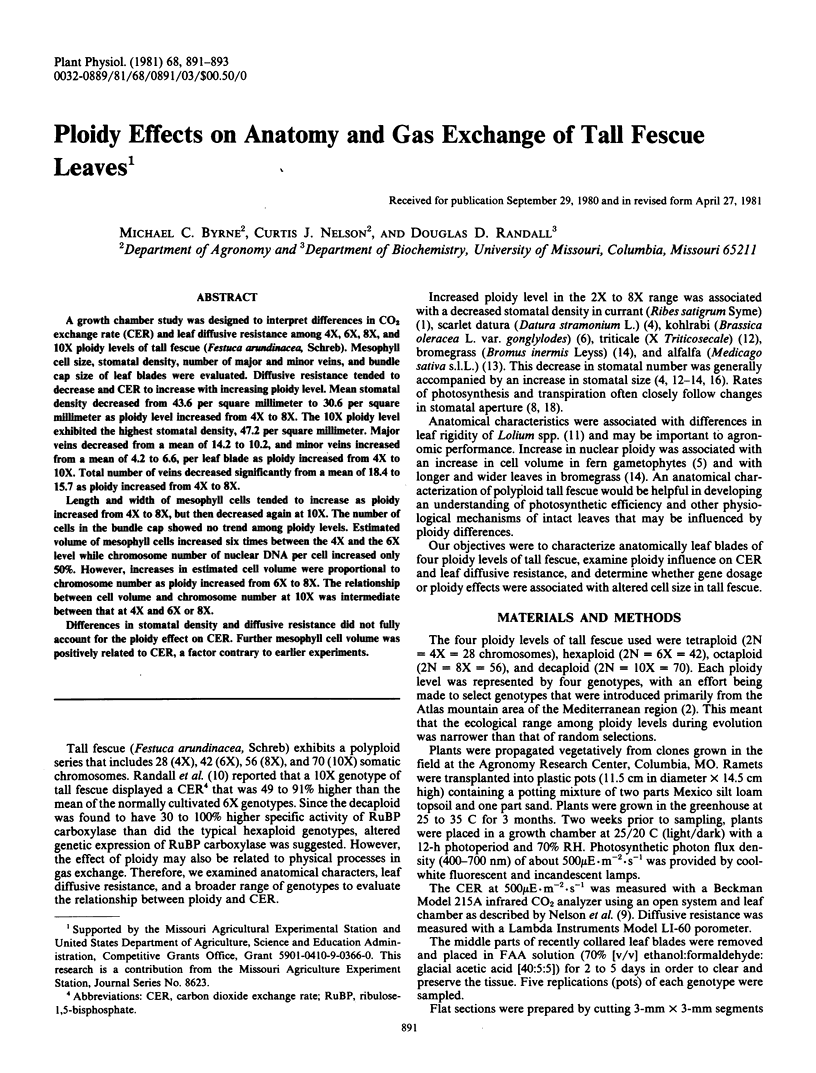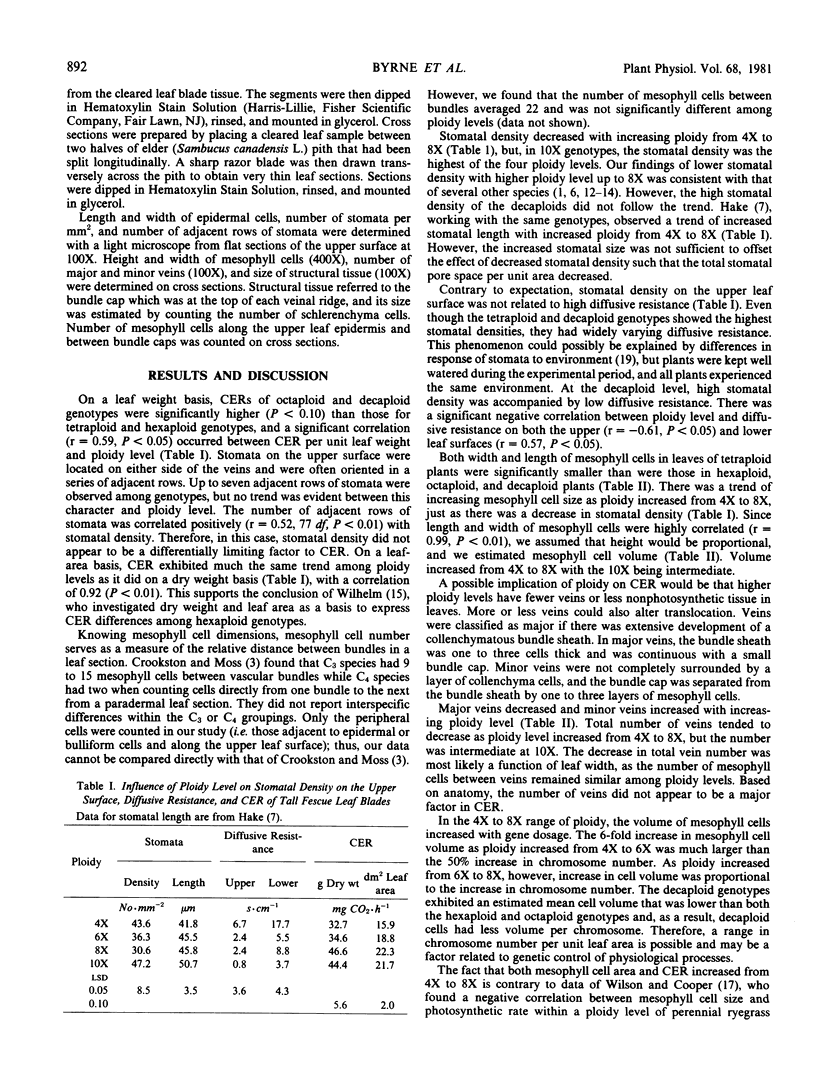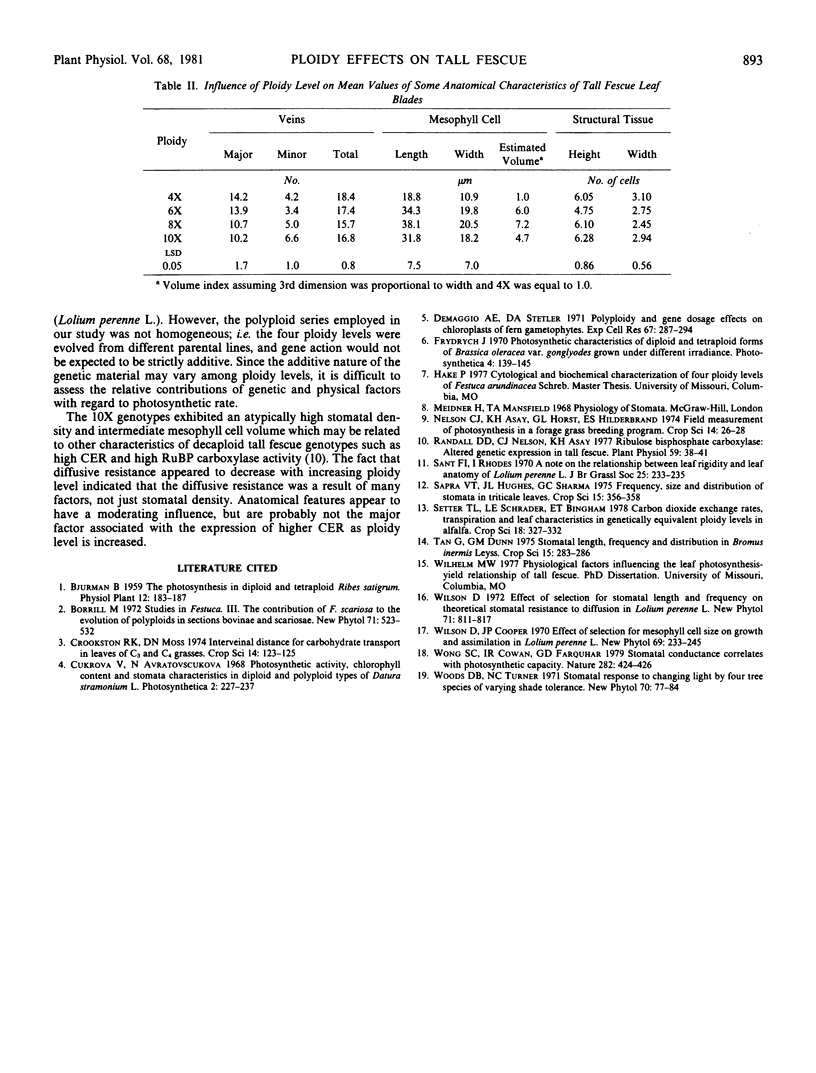Abstract
A growth chamber study was designed to interpret differences in CO2 exchange rate (CER) and leaf diffusive resistance among 4X, 6X, 8X, and 10X ploidy levels of tall fescue (Festuca arundinacea, Schreb). Mesophyll cell size, stomatal density, number of major and minor veins, and bundle cap size of leaf blades were evaluated. Diffusive resistance tended to decrease and CER to increase with increasing ploidy level. Mean stomatal density decreased from 43.6 per square millimeter to 30.6 per square millimeter as ploidy level increased from 4X to 8X. The 10X ploidy level exhibited the highest stomatal density, 47.2 per square millimeter. Major veins decreased from a mean of 14.2 to 10.2, and minor veins increased from a mean of 4.2 to 6.6, per leaf blade as ploidy increased from 4X to 10X. Total number of veins decreased significantly from a mean of 18.4 to 15.7 as ploidy increased from 4X to 8X.
Length and width of mesophyll cells tended to increase as ploidy increased from 4X to 8X, but then decreased again at 10X. The number of cells in the bundle cap showed no trend among ploidy levels. Estimated volume of mesophyll cells increased six times between the 4X and the 6X level while chromosome number of nuclear DNA per cell increased only 50%. However, increases in estimated cell volume were proportional to chromosome number as ploidy increased from 6X to 8X. The relationship between cell volume and chromosome number at 10X was intermediate between that at 4X and 6X or 8X.
Differences in stomatal density and diffusive resistance did not fully account for the ploidy effect on CER. Further mesophyll cell volume was positively related to CER, a factor contrary to earlier experiments.
Full text
PDF


Selected References
These references are in PubMed. This may not be the complete list of references from this article.
- DeMaggio A. E., Stetler D. A. Polyploidy and gene dosage effects on chloroplasts of fern gametophytes. Exp Cell Res. 1971 Aug;67(2):287–294. doi: 10.1016/0014-4827(71)90411-3. [DOI] [PubMed] [Google Scholar]
- Randall D. D., Nelson C. J., Asay K. H. Ribulose bisphosphate carboxylase: altered genetic expression in tall fescue. Plant Physiol. 1977 Jan;59(1):38–41. doi: 10.1104/pp.59.1.38. [DOI] [PMC free article] [PubMed] [Google Scholar]


